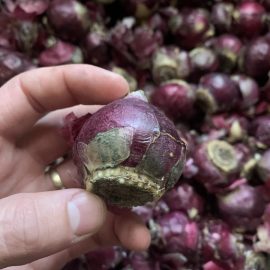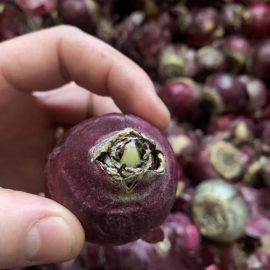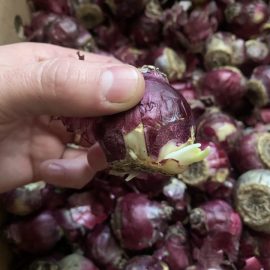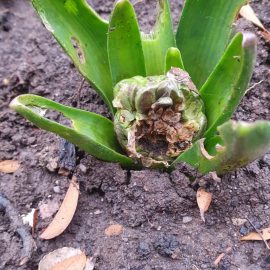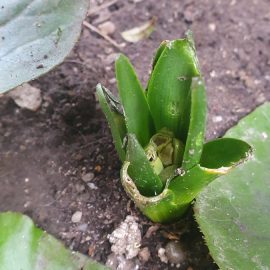Hyacinth, planting guide and care work
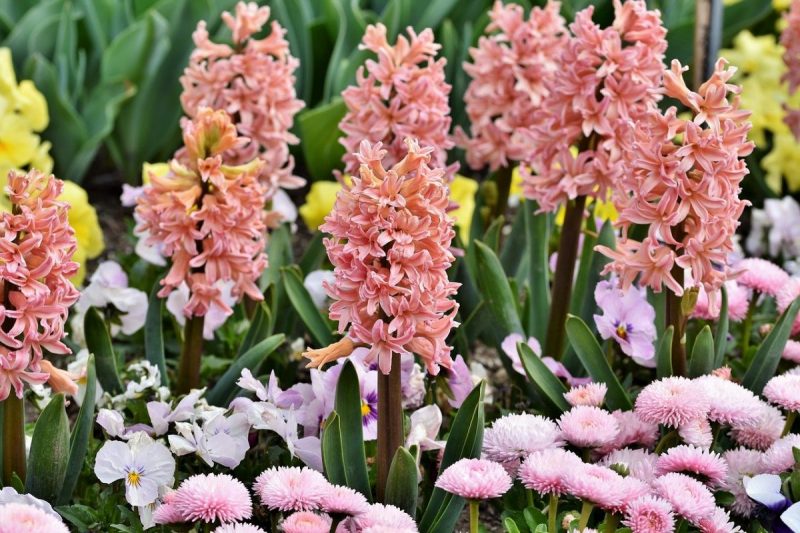
Hyacinthus orientalis, with the popular name of “hyacinth“, is a perennial, decorative plant, native to the Mediterranean area, which, over time, has spread throughout the entire world. It is part of the order Asparagales, family Liliaceae. The genus Hyacinthus includes about 30 herbaceous species, with tunicate bulbs. The bulb is spherical, tunicate, protected by differently colored cataphylls (white, yellow, purple, blue) depending on the variety and it ensures the continuity of the plant. Usually, the bulb is 4-5 cm in diameter, but it can reach gigantic dimensions (19 cm).
The plant can reach 40 cm in height, with linear leaves, with a length of 15 to 25 cm. The flowers can have various colors: purple, violet, white, pink, peach, blue, red, yellow, and orange, clustered in groups of 5 to 10 (in some hybrids even more) supported by a thick and succulent stem (10-25 cm). The flowers have a strong and pleasant fragrance.
They are very beautiful and appreciated for their intense fragrance. Hyacinths bloom at about the same time as mid-season tulips in late March-early April. They are excellent as cut flowers for bouquets and arrangements, but can also be easily grown in pots as house plants. The bulbs are toxic and therefore they are not consumed by rodents.
Depending on the variety, hyacinth flowers can be of several types:
Common hyacinths: “the blue giant” is one of the largest hyacinths, which has blue sky-colored flowers.
Double hyacinths: the spirals of flowers are arranged on stems with a height of 15-21 cm.
Multi-flower hyacinths: each bulb produces a series of flower stems, with delicate flower arrangements. These are less common than common or double hyacinths.
Among the most cultivated varieties, we mention L’Innocence, Porzellan (white), City of the Haarlem, Yellow Hammer (yellow), Anna Marie, Pink pearl (pink), Jan Bos, La Victorie (intense red), Delft Blue, Ostara (blue), Amethyst (purple).
Hyacinthus romanus Hort. develops simple flowers, colored in white, pink, and blue.
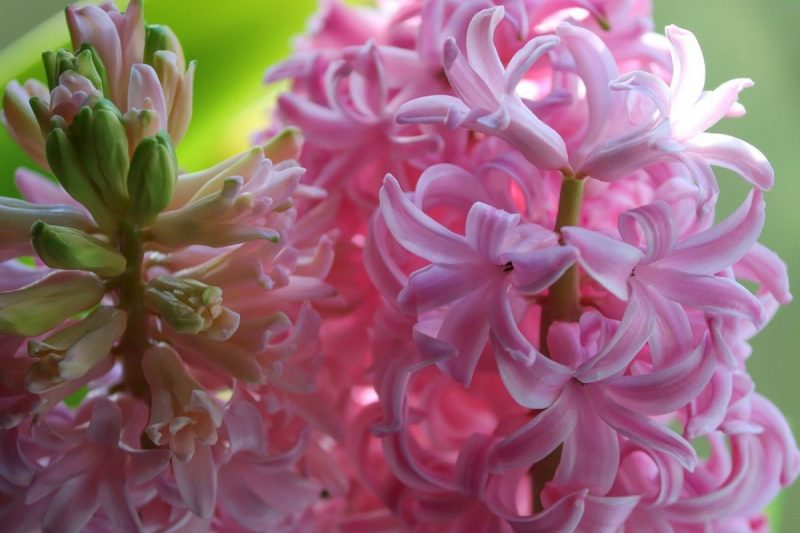
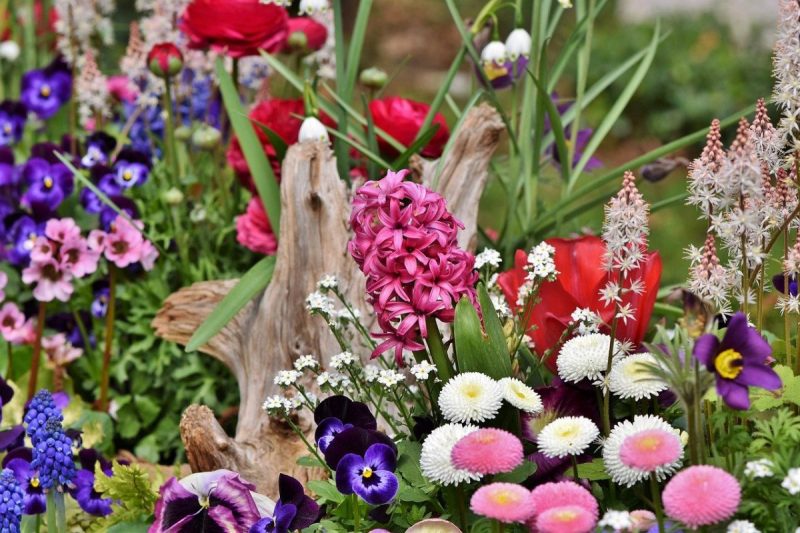
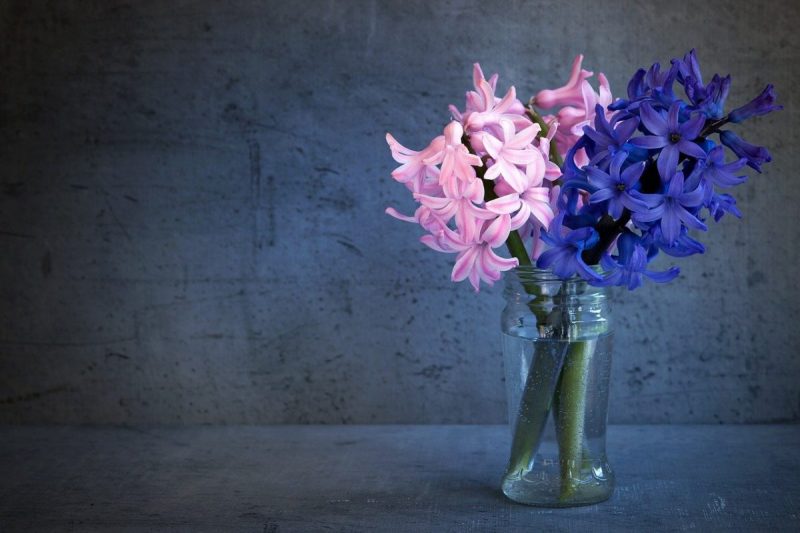
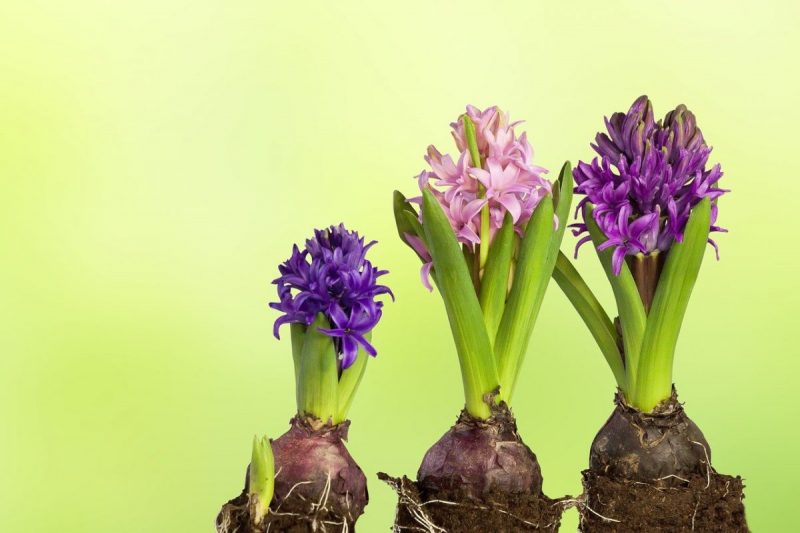
Environmental conditions
Temperature. Hyacinth is a plant whose aerial organs (in unfavorable conditions) dry out and the underground organs (bulbs) survive in the soil, ensuring continuity. For the bulbs to take root, they need to go through a period of low temperatures, of 3–4 °C for 8-12 weeks, depending on the variety and the forcing period. During dormancy, the bulb has to be maintained at constant temperatures of 20-22° C or, depending on the possibilities of controlling the temperature, different heat treatment schemes can be applied, concerning the period when flowering is desired.
During vegetative growth and flowering, the optimum temperature is 16-18 °C. A higher temperature causes a significant shortening of the flowering period.
Light. the Hyacinth needs a lot of light, especially during the vegetative growth period and flowering. The light, in the first days after starting the forcing method, should be diffused to allow a slight elongation of the floral stems.
Substrate. The Hyacinth prefers light soils, rich in humus, very well-drained, fertile, with slightly acidic pH.
Recommended products
-
You can find products on a different store
Change Store -
You can find products on a different store
Change Store -
You can find products on a different store
Change Store -
You can find products on a different store
Change Store -
You can find products on a different store
Change Store -
You can find products on a different store
Change Store -
You can find products on a different store
Change Store -
You can find products on a different store
Change Store -
You can find products on a different store
Change Store -
You can find products on a different store
Change Store -
You can find products on a different store
Change Store -
You can find products on a different store
Change Store -
You can find products on a different store
Change Store -
You can find products on a different store
Change Store -
You can find products on a different store
Change Store -
You can find products on a different store
Change Store -
You can find products on a different store
Change Store -
You can find products on a different store
Change Store -
You can find products on a different store
Change Store -
You can find products on a different store
Change Store -
You can find products on a different store
Change Store -
You can find products on a different store
Change Store -
You can find products on a different store
Change Store -
You can find products on a different store
Change Store
Aeration. Regular aeration is required for greenhouse crops.
Watering. Water must be administered in moderate but constant amounts. The atmosphere requires a relatively high humidity of 70-80%.
For open field cultures
Bulbs have to be planted in the fall, in September-October. The soil must be moist. If no manure has been applied to the previous crop, 5-6 kg/sqm of very well-decomposed garden mold should be applied.
A few days before planting, it is recommended to wash the bulbs, using products approved for this purpose.
The planting distances for flowering bulbs are 15 to 20 cm, and the planting depth is 8 to 10 cm.
Planting bulbs for cultures on which the forcing method is applied
It should be done in crates or pots, in a light substrate, moist and well-drained. The planting distances are very small, 2 to 3 cm in between. The planting depth has to be established so that the cone of leaves remains on the surface of the substrate. After planting, the bulbs need a period of 8 to 12 weeks of low temperatures, 4 to 5° C, to take root. For bulbs planted in pots or crates, this period is ensured by burying them in trenches outside or keeping them in storage.
After the rooting period of the bulbs, they have to be brought to the greenhouse where the temperature must rise to 22-23 ° C.
Throughout the forcing period, the substrate has to be permanently damp. Atmospheric humidity has to be kept at the level of 70-80%.
Ventilation of greenhouses has to be done regularly to maintain the relative humidity and air temperature at the optimal values for each stage of the forcing period.
Fertilization has to be performed in two stages: after the sprouting of the plants and after the development of flower buds.
Recommended products
-
You can find products on a different store
Change Store -
You can find products on a different store
Change Store -
You can find products on a different store
Change Store -
You can find products on a different store
Change Store -
You can find products on a different store
Change Store -
You can find products on a different store
Change Store -
You can find products on a different store
Change Store -
You can find products on a different store
Change Store -
You can find products on a different store
Change Store -
You can find products on a different store
Change Store -
You can find products on a different store
Change Store -
You can find products on a different store
Change Store -
You can find products on a different store
Change Store -
You can find products on a different store
Change Store -
You can find products on a different store
Change Store -
You can find products on a different store
Change Store -
You can find products on a different store
Change Store -
You can find products on a different store
Change Store -
You can find products on a different store
Change Store -
You can find products on a different store
Change Store -
You can find products on a different store
Change Store -
You can find products on a different store
Change Store -
You can find products on a different store
Change Store -
You can find products on a different store
Change Store
Diseases and pests
Among the most frequent diseases, we will mention gray mold (Botrytis cinerea), bulb rot (Xanthomonas hyacinthus), bacterial soft rot (Erwinia carotovora), and rust.
Avoid excessive watering, which could cause the bulbs to rot.
Treating the bulbs before they are stored in warehouses and before planting is an effective means of preventing the attack of these diseases.
The plants can be attacked by mites whose presence is observed on the leaves and stems. They become deformed – the plants are poorly developed and have deformed flowers.
To control these pests, apply specific acaricide treatments.
Hyacinths can also be attacked by nematodes, pests that are difficult to fight. The symptoms manifest through the swelling of the leaves at the base, their curling up and the appearance of yellow spots. The flowers are small and deformed and oftentimes they do not even develop. In case of a nematodes infestation, you can use specific products.
It is recommended that the bulbs used for planting be healthy and that the planting be carried out in optimal conditions, using disinfected and improved peat.
Recommended products
-
You can find products on a different store
Change Store -
You can find products on a different store
Change Store -
You can find products on a different store
Change Store -
You can find products on a different store
Change Store -
You can find products on a different store
Change Store -
You can find products on a different store
Change Store -
You can find products on a different store
Change Store -
You can find products on a different store
Change Store -
You can find products on a different store
Change Store -
You can find products on a different store
Change Store -
You can find products on a different store
Change Store -
You can find products on a different store
Change Store -
You can find products on a different store
Change Store -
You can find products on a different store
Change Store -
You can find products on a different store
Change Store -
You can find products on a different store
Change Store -
You can find products on a different store
Change Store -
You can find products on a different store
Change Store -
You can find products on a different store
Change Store -
You can find products on a different store
Change Store -
You can find products on a different store
Change Store -
You can find products on a different store
Change Store -
You can find products on a different store
Change Store -
You can find products on a different store
Change Store
Harvesting the flowers
The flower stems are harvested by cutting from the point of insertion on the bulb, together with the leaves, when the basal buds are colored and open.
Recommended products
-
You can find products on a different store
Change Store -
You can find products on a different store
Change Store -
You can find products on a different store
Change Store -
You can find products on a different store
Change Store -
You can find products on a different store
Change Store -
You can find products on a different store
Change Store -
You can find products on a different store
Change Store -
You can find products on a different store
Change Store -
You can find products on a different store
Change Store -
You can find products on a different store
Change Store -
You can find products on a different store
Change Store -
You can find products on a different store
Change Store -
You can find products on a different store
Change Store -
You can find products on a different store
Change Store -
You can find products on a different store
Change Store -
You can find products on a different store
Change Store -
You can find products on a different store
Change Store -
You can find products on a different store
Change Store -
You can find products on a different store
Change Store -
You can find products on a different store
Change Store -
You can find products on a different store
Change Store -
You can find products on a different store
Change Store -
You can find products on a different store
Change Store -
You can find products on a different store
Change Store
After harvesting, they have to be placed with the base in cold water and taken to cool areas with a temperature of 2 to 3° C, where they can be stored for 4 to 5 days before being delivered.
Recommended products
-
You can find products on a different store
Change Store -
You can find products on a different store
Change Store -
You can find products on a different store
Change Store -
You can find products on a different store
Change Store -
You can find products on a different store
Change Store -
You can find products on a different store
Change Store -
You can find products on a different store
Change Store -
You can find products on a different store
Change Store -
You can find products on a different store
Change Store -
You can find products on a different store
Change Store -
You can find products on a different store
Change Store -
You can find products on a different store
Change Store -
You can find products on a different store
Change Store -
You can find products on a different store
Change Store -
You can find products on a different store
Change Store -
You can find products on a different store
Change Store -
You can find products on a different store
Change Store -
You can find products on a different store
Change Store -
You can find products on a different store
Change Store -
You can find products on a different store
Change Store -
You can find products on a different store
Change Store -
You can find products on a different store
Change Store -
You can find products on a different store
Change Store -
You can find products on a different store
Change Store
Bulb harvesting
Usually, the bulbs resulting from forced cultures do not recover; however, some growers plant these bulbs after harvesting the flowers in a field where they can bloom again after 2 to 3 years. For Hyacinth cultures set up in the field, the bulbs must be removed in summer, during the dormancy period, once every 3 to 4 years. After removal from the field, the bulbs have to be sorted into size categories, aired well and placed in storage in warm, dry and well-ventilated areas until autumn (September-October), when they can be replanted at the place of cultivation, depending on the size and destination.














































































































































































































































































































































































































































